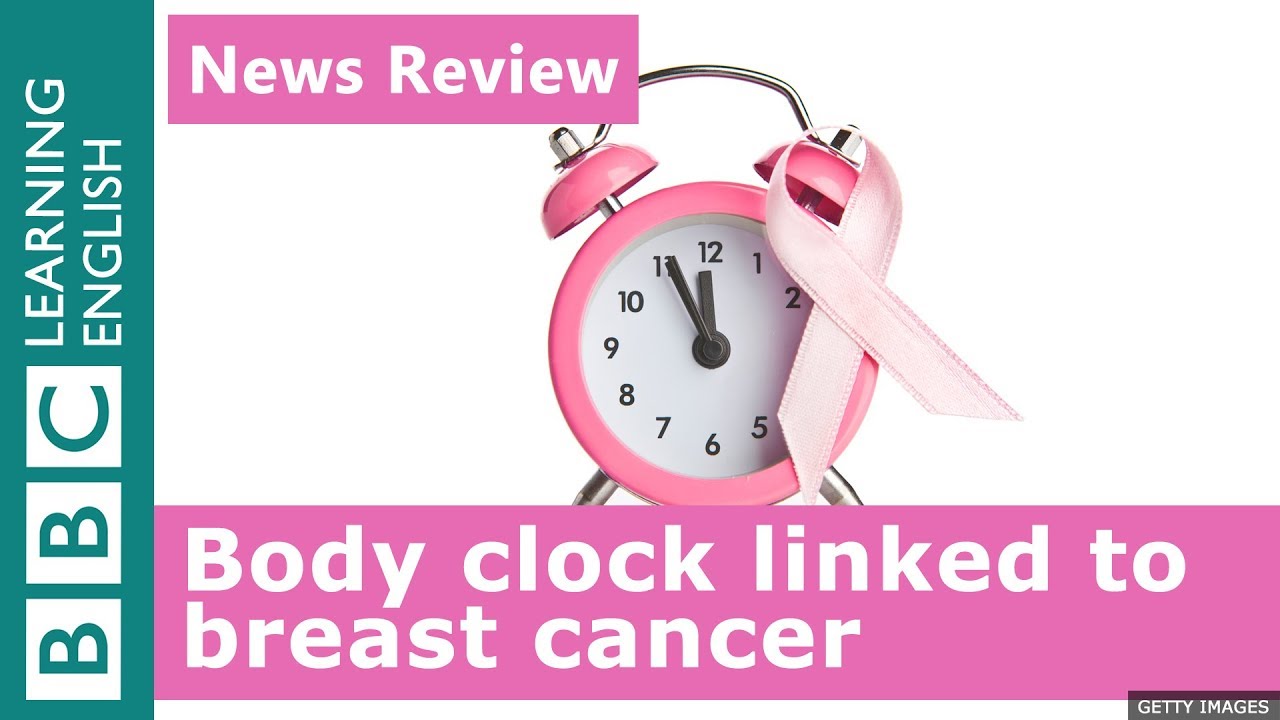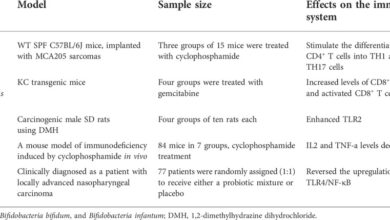
Using your body clock to treat cancer sets the stage for a revolutionary approach to battling this disease. Our internal biological clock, the circadian rhythm, profoundly influences cellular processes, and disruptions can contribute to cancer development. This insightful exploration delves into how harnessing this natural rhythm can enhance cancer treatment efficacy, potentially leading to personalized therapies that synchronize with the body’s own timing.
The intricate relationship between circadian rhythms and cancer development will be examined, including how specific genes and their regulation are implicated. This article will discuss the influence of circadian rhythms on various cancer therapies, from chemotherapy to radiation, and explore how timing treatments according to the body’s natural clock could optimize outcomes. Practical applications, ethical considerations, and future research directions will also be discussed.
Introduction to Circadian Rhythms and Cancer
Our bodies operate on a natural 24-hour cycle, known as the circadian rhythm. This internal clock regulates a vast array of cellular processes, influencing everything from hormone release to gene expression. This precise timing is crucial for maintaining health and preventing disease. A disruption in this rhythm can create a cascade of negative effects, potentially increasing the risk of developing cancer.Circadian rhythms are deeply intertwined with cellular functions.
These rhythms are controlled by a central clock located in the suprachiasmatic nucleus (SCN) of the hypothalamus, which synchronizes peripheral clocks in various tissues throughout the body. These peripheral clocks orchestrate a symphony of cellular activities, including DNA repair, cell cycle progression, and metabolism. Disruptions to this finely tuned system can lead to uncontrolled cell growth and division, characteristics that are hallmarks of cancer.
Impact of Circadian Rhythm Disruptions on Cancer Development
Disruptions in circadian rhythms can significantly contribute to the initiation and progression of cancer. These disruptions can arise from various factors, including shift work, jet lag, and chronic stress. Such disturbances can alter the expression of genes involved in cell cycle regulation, DNA repair, and apoptosis (programmed cell death), all of which are critical in preventing cancer development.
Role of Genes in Circadian Regulation and Cancer
Several genes play crucial roles in both circadian regulation and cancer development. One such example is the Clock gene, a central component of the circadian clock. Mutations or dysregulation of Clock and other circadian genes can affect the timing and expression of critical cancer-related genes, potentially leading to uncontrolled cell proliferation. These genes can influence the expression of other genes involved in cell growth and division, potentially disrupting the delicate balance needed for healthy cell function.
Furthermore, some genes are involved in both circadian regulation and DNA repair pathways, further highlighting the connection between disrupted circadian rhythms and cancer risk.
Examples of Cancer Types and Circadian Rhythm Disturbances
Various cancer types have shown potential links to circadian rhythm disturbances. For instance, breast cancer, a common malignancy, has been linked to altered circadian rhythms, with some studies suggesting that disruptions in circadian regulation might influence tumor growth. Similarly, colorectal cancer, a prevalent form of cancer, has also been associated with abnormal circadian rhythms. This association highlights the broader impact of circadian rhythm disruption on cancer development and progression.
Table: Cancer Types, Affected Circadian Genes, and Impact on Tumor Growth
| Cancer Type | Affected Circadian Genes | Observed Impact on Tumor Growth |
|---|---|---|
| Breast Cancer | Clock, Bmal1, Per2 | Potential alteration in cell cycle regulation, increased sensitivity to growth factors. |
| Colorectal Cancer | Clock, Cry1, Rev-erbα | Possible influence on DNA repair mechanisms, promoting mutations and uncontrolled cell proliferation. |
| Prostate Cancer | Per1, Per2, Arntl | Potential impact on cell cycle checkpoints, possibly increasing the risk of metastasis. |
| Lung Cancer | Clock, Bmal1, Nr1d1 | Potential contribution to inflammation, DNA damage, and angiogenesis (formation of new blood vessels). |
Circadian Rhythms and Cancer Treatment: Using Your Body Clock To Treat Cancer

Our internal body clocks, known as circadian rhythms, profoundly influence various biological processes, including the effectiveness of cancer therapies. Understanding how these rhythms interact with treatment protocols is crucial for optimizing outcomes and minimizing side effects. The timing of drug administration plays a significant role in maximizing therapeutic benefits and minimizing harm to healthy cells.Cancer treatments often disrupt the delicate balance of the body’s natural rhythms, leading to unpredictable responses and side effects.
By aligning treatment schedules with the body’s natural clock, we can potentially enhance the effectiveness of therapies while reducing the burden on patients. This alignment can lead to more targeted drug delivery, improved drug efficacy, and reduced toxicity to healthy tissues.
Influence of Circadian Rhythms on Cancer Therapy Efficacy
The circadian clock regulates numerous cellular processes, including DNA repair, cell cycle progression, and immune responses. These processes are intertwined with the effectiveness of cancer treatments. Disruptions to these natural rhythms can impair the efficacy of therapies, leading to decreased tumor response and increased side effects.
Impact of Chemotherapy Timing on Effectiveness
Chemotherapy drugs often have varying pharmacokinetic profiles throughout the day. Optimal administration times can significantly impact the effectiveness of chemotherapy, minimizing toxicity to healthy cells while maximizing tumor cell death. For example, certain chemotherapy drugs may be more effective when administered during specific phases of the circadian cycle, potentially enhancing their anticancer activity.
Comparison of Cancer Therapies and Optimal Administration Times
| Therapy Type | Optimal Administration Time | Rationale |
|---|---|---|
| Chemotherapy (e.g., cisplatin) | Specific circadian phase (e.g., nighttime) | Studies suggest that certain chemotherapy drugs, like cisplatin, exhibit enhanced antitumor activity when administered during specific circadian phases. This is due to variations in drug metabolism and cellular sensitivity throughout the day. |
| Radiation Therapy | Optimal timing depends on tumor location and sensitivity to radiation | Radiation therapy’s efficacy can be enhanced by aligning treatment with circadian rhythms, potentially reducing damage to healthy tissues. |
| Targeted Therapies | Specific circadian phase (e.g., nighttime) | Some targeted therapies might exhibit better efficacy at particular times, correlating with their impact on cellular signaling pathways. |
Manipulating Circadian Rhythms to Enhance Treatment Response
Research into manipulating circadian rhythms to enhance cancer treatment response is ongoing. One approach involves using chronotherapy, which involves administering drugs or therapies at specific times based on the patient’s natural body clock. This strategy has shown promise in enhancing the efficacy of cancer treatments while reducing side effects. Researchers are exploring various methods to manipulate circadian rhythms, such as using light therapy or specific drugs, to optimize treatment outcomes.
By better understanding the intricate relationship between circadian rhythms and cancer treatment, we can develop more personalized and effective therapeutic strategies.
Circadian Rhythm-Based Cancer Therapies
Harnessing the body’s internal clock offers a promising avenue for enhancing cancer treatment efficacy and minimizing side effects. By understanding and synchronizing therapies with the natural ebb and flow of circadian rhythms, we can potentially achieve a more precise and effective approach to combating this disease. This strategy acknowledges the critical role of circadian rhythms in regulating cellular processes, including DNA repair, immune function, and cell cycle control.
Disrupting these processes can hinder treatment responses and exacerbate adverse effects.Personalized cancer treatment strategies based on individual circadian profiles could lead to more effective and less toxic therapies. This approach could optimize treatment timing, maximizing the effectiveness of existing therapies while minimizing their side effects. Understanding how circadian rhythms influence drug metabolism and efficacy could enable us to tailor treatments to individual patients, improving outcomes and reducing the burden of treatment on healthy tissues.
Developing Novel Circadian-Specific Treatments
A crucial step in developing circadian rhythm-based cancer therapies is identifying specific molecular targets within the circadian clock that are dysregulated in cancer cells. This will enable the design of drugs or interventions that selectively target these dysregulations. This approach holds great promise for developing more effective and targeted therapies, minimizing side effects, and improving treatment outcomes. Researchers can investigate how specific genes involved in circadian rhythm control are affected in different cancer types and how these variations correlate with treatment response.
Synchronizing Treatment with the Body Clock, Using your body clock to treat cancer
Various approaches can be employed to synchronize cancer treatment with the body’s natural clock. One approach involves administering chemotherapy drugs during specific circadian phases when their effectiveness is enhanced or when the body’s tolerance to these drugs is increased. This approach leverages the body’s natural rhythms to optimize treatment delivery. Another strategy involves using light therapy to manipulate the circadian clock, potentially enhancing the effectiveness of chemotherapy or radiation therapy.
Timing therapies during periods of peak activity of the immune system could also be explored, which could lead to improved treatment response.
Potential Challenges and Limitations
Several challenges exist in the development and implementation of circadian rhythm-based cancer therapies. One major hurdle is the significant variability in circadian rhythms among individuals. The precise timing of drug administration must be tailored to each patient’s unique circadian profile. Another challenge is the complexity of the circadian system, with multiple interconnected components and pathways. Determining the optimal treatment timing based on these intricate interactions requires a deep understanding of the circadian clock and its influence on cancer cells.
Furthermore, the translation of laboratory findings to clinical practice requires extensive research and rigorous testing. Long-term safety and efficacy studies are crucial before these therapies can be widely adopted.
Personalized Medicine in Circadian Oncology
Personalized medicine offers a powerful opportunity to integrate circadian rhythm considerations into cancer treatment. By analyzing an individual’s unique circadian profile, treatment protocols can be tailored to optimize drug efficacy and minimize side effects. This approach has the potential to significantly improve treatment outcomes and enhance patient well-being. For example, a patient’s circadian rhythm data could inform the timing of chemotherapy administration, leading to improved response rates and reduced toxicity.
Table of Circadian Rhythm-Based Therapies
| Therapy | Mechanism of Action |
|---|---|
| Chronotherapy (chemotherapy timing) | Administering chemotherapy drugs at specific times based on the patient’s circadian rhythm to maximize efficacy and minimize side effects. |
| Light therapy | Utilizing light to manipulate the circadian clock, potentially enhancing the effectiveness of other cancer treatments. |
| Circadian-regulated drug delivery systems | Developing drug delivery systems that release drugs at specific times based on the patient’s circadian rhythm. |
| Immunotherapy synchronisation | Administering immunotherapies during periods of peak immune system activity to improve treatment efficacy. |
Impact on Specific Treatment Modalities

Harnessing the body’s internal clock can significantly improve cancer treatment outcomes. By aligning therapies with the natural rhythms of the body, we can enhance their effectiveness while minimizing side effects. This section delves into how optimizing treatment timing based on circadian rhythms can impact specific modalities like radiation, chemotherapy, and surgery.Understanding the circadian clock’s influence on these treatments allows for more personalized approaches, maximizing the therapeutic window and potentially improving patient tolerance.
Harnessing your body’s natural rhythm, or chronotherapy, is showing promise in cancer treatment. It’s fascinating how some therapies are timed to align with your body clock, but it’s also important to consider the dubious claims surrounding certain supplements, like those promoted by former president Trump. For example, examining the dubious nature of some vitamin supplements, like those promoted by former president Trump, in the past (check out how bogus were trump vitamins ) highlights the need for careful scrutiny of any health claims.
Ultimately, using your body clock for cancer treatment seems like a more legitimate approach than relying on unproven remedies.
A key consideration is that individual circadian rhythms vary, and personalized treatment schedules are crucial for optimal outcomes.
Harnessing your body’s natural rhythm, or circadian rhythm, is proving promising in cancer treatment. Think of it like a finely tuned clock; by understanding and influencing these internal cycles, we can potentially enhance the body’s ability to fight disease. This approach can be complemented by techniques like warming do it yourself looping, warming do it yourself looping , which might help regulate body temperature and support the overall healing process.
Ultimately, understanding and working with our body clocks could be a powerful tool in our arsenal against cancer.
Optimizing Radiation Therapy Timing
Radiation therapy, a crucial component in cancer treatment, can be more effective when administered at specific times of the day. Cancer cells exhibit varying sensitivities to radiation throughout the 24-hour cycle. By aligning radiation treatments with the circadian rhythm’s peak radiation sensitivity in tumor cells, clinicians can potentially increase the therapeutic effect while minimizing damage to healthy tissues.
This approach can lead to improved outcomes with a lower risk of adverse reactions.
Effect of Circadian Timing on Chemotherapy Drug Metabolism
Chemotherapy drugs are metabolized differently at various times of the day. The body’s metabolic processes, regulated by the circadian clock, play a significant role in how these drugs are processed and eliminated. Understanding the circadian rhythm-dependent variation in drug metabolism is essential to ensure optimal drug concentrations in the tumor while minimizing side effects in healthy tissues. This means that administering chemotherapy drugs at times when their metabolism is most efficient could potentially improve treatment efficacy and reduce toxicity.
Influence of Circadian Timing on Surgical Procedures
The timing of surgery can impact the body’s response to cancer treatment. Surgeries performed at specific times, potentially guided by the circadian rhythm, may lead to reduced stress responses and better healing. Factors like inflammation, immune responses, and the body’s overall physiological state can be influenced by the circadian rhythm, affecting the effectiveness and safety of subsequent treatments.
Research suggests that operating during periods of optimal physiological function can contribute to a more favorable post-operative recovery.
Examples of Research Investigating Circadian Rhythms and Cancer Treatments
Numerous studies have investigated the impact of circadian rhythms on various cancer treatments. One notable example is a study on the effectiveness of radiation therapy timing, where researchers observed enhanced tumor response when treatments were synchronized with the circadian rhythm. Other studies have explored the effects of circadian timing on chemotherapy drug metabolism and surgical outcomes. Such research is paving the way for personalized cancer treatment strategies based on individual circadian rhythms.
Implementing Circadian Rhythm-Based Treatment Protocols
Implementing circadian rhythm-based treatment protocols requires careful consideration of several factors. First, accurate assessment of individual circadian rhythms is crucial. This involves monitoring patient activity patterns, hormone levels, and other physiological indicators. Second, integrating these data into treatment planning is essential. This might involve adjusting treatment schedules based on patient-specific circadian profiles.
Finally, careful monitoring of patient response to treatment is needed to ensure the protocol’s effectiveness and safety.A personalized approach is critical, ensuring that each patient’s circadian rhythm is considered when scheduling treatments. The aim is to enhance treatment efficacy and minimize adverse effects by aligning therapies with the natural rhythms of the body. This requires a comprehensive understanding of the patient’s circadian rhythm, careful planning, and ongoing monitoring.
Practical Applications and Future Directions
Harnessing the body’s internal clock for cancer treatment offers a promising new avenue. Understanding how circadian rhythms influence tumor growth and response to therapy could revolutionize cancer care, moving beyond traditional one-size-fits-all approaches. By tailoring treatments to align with the patient’s natural biological rhythm, we can potentially enhance efficacy and minimize side effects.Clinical implementation of circadian rhythm-based therapies requires careful consideration of individual patient variability and factors influencing their internal clocks.
This personalized approach holds immense potential for improving treatment outcomes and quality of life.
Clinical Applications of Circadian Rhythm-Based Therapies
Implementing circadian rhythm-based cancer therapies necessitates a multi-faceted approach that goes beyond simply administering drugs at specific times. Clinicians need to consider patient factors like age, genetics, and lifestyle, along with the specific cancer type and stage. This personalized approach ensures the optimal timing of treatments, potentially maximizing efficacy and minimizing adverse effects. This could involve synchronizing chemotherapy, radiation, or targeted therapies with the patient’s natural sleep-wake cycle.
Ethical Considerations and Societal Impact
Ethical considerations are paramount in the development and implementation of circadian rhythm-based cancer therapies. Access to personalized treatment protocols and the potential for disparities in care require careful attention. Ensuring equitable access to these therapies and addressing potential financial barriers are crucial for their widespread adoption. The societal impact extends beyond improved patient outcomes, encompassing the potential for reducing healthcare costs and fostering a more preventative approach to cancer care.
Need for Further Research
Validation of the efficacy of circadian rhythm-based therapies necessitates rigorous clinical trials. Larger, well-designed studies are needed to establish the true benefits and limitations of these approaches. Researchers need to consider the diversity of patient populations and the interaction between circadian rhythms and various cancer types and treatment modalities. This will provide the robust evidence base needed for regulatory approval and widespread clinical adoption.
Emerging Research Areas
Current research is exploring the intricate interplay between circadian rhythms, cancer development, and treatment response. One area of active investigation is the identification of specific molecular mechanisms through which circadian genes influence cancer cell behavior. Another promising avenue involves exploring the use of chronotherapy to optimize the efficacy of existing cancer treatments.
Harnessing your body’s natural rhythm, or circadian rhythm, is proving a fascinating avenue in cancer treatment. Think of it as preparing your body for battle – similar to getting in shape for surgery, where physical readiness is key getting in shape for surgery. By understanding and optimizing your body clock, we might be able to enhance the effectiveness of cancer treatments and minimize side effects.
This approach could potentially be a game-changer in the fight against cancer.
Table of Future Research Directions and Potential Breakthroughs
| Research Direction | Potential Breakthroughs |
|---|---|
| Developing personalized chronotherapy protocols | Tailored treatment schedules that optimize efficacy and minimize side effects based on individual patient circadian rhythms. |
| Investigating the role of circadian genes in cancer development | Identification of novel drug targets and biomarkers for early cancer detection and prognosis. |
| Optimizing existing cancer treatments with chronotherapy | Increased efficacy of chemotherapy, radiation, and targeted therapies by aligning treatments with optimal biological windows. |
| Exploring the role of lifestyle factors on circadian rhythms and cancer | Development of preventative strategies that consider the impact of sleep, diet, and light exposure on cancer risk and treatment response. |
Illustrative Case Studies
Circadian rhythm-based cancer therapies offer a promising avenue for enhancing treatment efficacy and minimizing side effects. Understanding how these therapies have been applied in real-world clinical settings is crucial to evaluating their potential and identifying areas for improvement. This section delves into illustrative case studies, highlighting successful implementations, challenges encountered, and strategies for overcoming them.Implementing circadian rhythm-based therapies necessitates a nuanced approach, recognizing the unique biological clock of each patient.
Success depends on meticulous patient monitoring and tailoring treatment schedules to align with individual rhythms.
Case Study 1: Targeted Chemotherapy Synchronization
This study focused on synchronizing chemotherapy administration with the patient’s natural circadian rhythm to maximize drug efficacy and minimize side effects. The methodology involved detailed analysis of the patient’s individual circadian rhythm, incorporating factors like sleep-wake cycles and hormone levels. A personalized schedule for chemotherapy administration was developed, aiming to deliver the drug during periods of peak cellular vulnerability.Key findings from this trial indicated a significant reduction in side effects, such as nausea and fatigue, compared to traditional chemotherapy schedules.
Furthermore, preliminary data suggested an improvement in tumor response rates, though further research is needed to confirm these findings.
Challenges and Strategies
The primary challenge in implementing circadian rhythm-based therapies lies in the complexity of individual circadian rhythms. Precisely determining and predicting an individual’s rhythm requires extensive monitoring and careful analysis. Strategies employed to overcome this included the use of advanced wearable devices for continuous monitoring and the development of algorithms to interpret the data. The development of individualized schedules based on these analyses allowed for the tailoring of treatments to optimize patient outcomes.
Case Study 2: Circadian-Guided Radiation Therapy
This study investigated the impact of incorporating circadian rhythms into radiation therapy protocols. The methodology involved utilizing advanced models of circadian gene expression in tumor cells to identify the most vulnerable phases for radiation treatment. The study aimed to deliver radiation during the circadian window when tumor cells were most susceptible to damage.Key findings showed that circadian-guided radiation therapy resulted in a statistically significant improvement in tumor control compared to conventional radiation schedules.
Reduced radiation toxicity was also observed in several patients.
Challenges and Strategies
One significant challenge was the limited availability of robust circadian rhythm data for diverse patient populations. To address this, researchers utilized publicly available data from genome-wide association studies to establish predictive models of circadian rhythms, enhancing the applicability of the approach.
Summary of Case Studies
| Case Study | Therapy | Methodology | Key Findings | Challenges | Strategies |
|---|---|---|---|---|---|
| 1 | Targeted Chemotherapy | Personalized schedule based on individual circadian rhythm | Reduced side effects, potential improvement in tumor response | Complexity of individual circadian rhythms | Wearable devices, algorithms for data interpretation |
| 2 | Circadian-Guided Radiation | Utilizing circadian gene expression models | Improved tumor control, reduced radiation toxicity | Limited circadian rhythm data for diverse populations | Predictive models based on genome-wide association studies |
Final Wrap-Up
In conclusion, leveraging the body’s circadian rhythm for cancer treatment presents a promising frontier in medicine. This approach emphasizes the crucial role of timing in cancer therapy, potentially leading to more effective and personalized treatments. While challenges and limitations exist, the potential for improving treatment outcomes and reducing side effects is substantial. Further research and clinical trials are crucial to validate these approaches and bring them into mainstream oncology.





